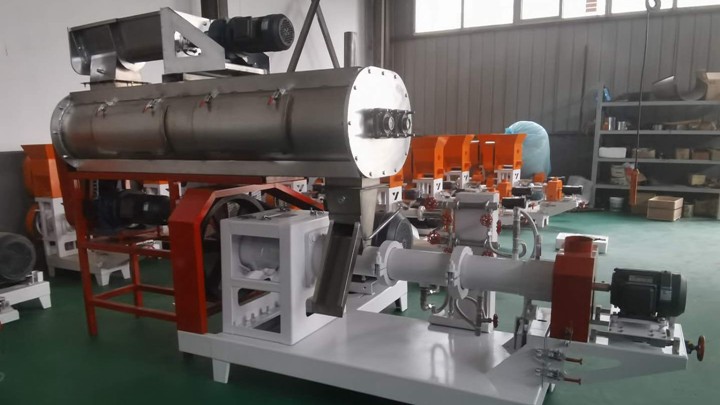.jpg)
2022-9-15·Feed accounts for 60–80% of tilapia production costs, and high feed cost and limited feed access are major issues faced by fish farmers. A potential solution is for farmers to produce their own feeds using cheaper and locally available ingredients.
.jpg)
The dough is started with blends of dry ingredients, which are finely ground and mixed. The dough is then kneaded and water is added to produce the desired consistency for whatever fish is going to be fed. The same dough may be used to feed several types of fish, such as eels and small aquarium fish.
.jpg)
Commercial fish feed cost : Market research shows that ordinary feed is $742 a ton; the extruded feed is $2938 a ton, among which floating feeds cost an average of 20 percent more than sinking feeds. For small-scale fish farmers in developing nations, rising feed and related costs are often too high to be absorbed into already-thin profit margins.
.jpg)
These fish feed grow due to the fertility the soil possesses naturally, but organic fertilization also helps to produce them. Supplementary Feed. This is a type of feed that is made up of materials that are easily and locally available to the feed producer. When a large number of fish is being reared, they would require supplementary feed to be ...
.jpg)
2016-2-1·Feed formulation is an integral part of catfish farming business, especially in tropical Africa.This is due to the fact that imported fish feeds are always expensive due to the cost of logistics on importation and weak local currency, making the cost of such products skyrocket.. The environment in Africa allows individual farmers to formulate …
.jpg)
2021-2-9·The high-tech facility will produce up to 3,000 tonnes of hybridized grouper, coral trout, and shrimp each year—with an efficiency, measured in fish per tonne of water, that is six times higher ...
.jpg)
In Thailand, a typical feed formulation for herbivorous fish may include fishmeal (16 percent), peanut meal (24 percent), soybean meal (14 percent), rice bran (30 percent), broken rice (15 percent) and vitamin/mineral premixes (1 percent) (Somsueb, 1994). Some examples of farm-made feed formulations for tilapia at various life stages under semi ...
.jpg)
The dough is started with blends of dry ingredients, which are finely ground and mixed. The dough is then kneaded and water is added to produce the desired consistency for whatever fish is going to be fed. The same dough may be used to feed several types of fish, such as eels and small aquarium fish.
.jpg)
2013-3-1·Feed ingredients like mustard oil cake, rice bran, fish meal, wheat flour, and vitaminmineral premix are used to make supplementary feed with 30-35% protein level (Debnath et al. 2018). On the ...
.jpg)
2019-6-1·1. Introduction. An artificial feed is important for the improvement of fisheries and achieving maximum yields from resources of fresh water (Bhosale et al., 2010).Fish meal is considered to be the best ingredients, due to its compatibility with the protein requirement of fish (Alexis et al., 1996).Augusto et al. (1973), Fagbenro (1988), Kwari …

2020-10-15·General Fish Feeding practice by the farmers: Feed has got a significant impact on the quality, safety and nutritional value of farmed fish. The feed requirements of fish vary in quantity and quality according to the feeding habits, physiological stages of the species and environmental variations viz., temperature; amount and type of natural food …
.jpg)
2020-6-30·Supporting Local Produce Local production is an important secondary strategy in ensuring food supply resilience for Singapore.. It complements our key strategy of source diversification and ensures a degree of self-sufficiency for key food items such as eggs, fish and leafy vegetables. Locally grown food production will also provide us with a …
.jpg)
2020-7-28·Introduction. Aquaculture was first introduced to many countries in Africa at the turn of the 20th century mainly to satisfy colonial recreational fishing needs (Hecht et al. 2006).In the 1920s, tilapia were successfully produced in static water ponds in Kenya (FAO 2005-2020e).Aquaculture as a means of sustainable food production was later …

2022-7-13·A number of items available through USDA Foods are sourced solely from one state. For example, 100 percent of the strawberries purchased by USDA Foods in FY2014 came from the state of California. During this time, California schools received approximately 3.3 million pounds of this locally produced product through the USDA …
.jpg)
1 ·It takes 1,500 litres of water to produce a kilogramme of cereal and 15,000 to produce one kilogramme of meat. Healthier diets will help reduce the pressure on our natural resources and respond to ...